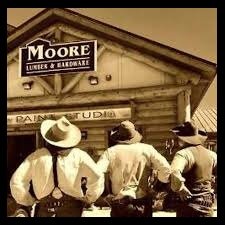The Historical Evolution of Naperville and Moore Lumber
Naperville, a vibrant city located in DuPage and Will counties in Illinois, is known today for its thriving economy, excellent schools, and rich cultural heritage. However, its historical roots date back to the early 19th century, when it was just a fledgling settlement. Among the many industries that contributed to the city’s growth, the Moore Lumber Company is one of the most significant businesses in Naperville’s history. In this article, we will delve into Naperville’s history, focusing on the Moore Lumber Company and its role in shaping the city’s development.
Early Days of Naperville
Naperville was founded in 1831 by Captain Joseph Naper and quickly became a hub for early settlers looking for opportunities in the Midwest. With its prime location near the DuPage River and burgeoning transportation networks, Naperville began to snowball in the mid-1800s. The city’s early economy was rooted in agriculture, but industries such as milling and manufacturing soon took hold, further spurring growth.
Among these early industries was lumber, which became a cornerstone of the local economy. The abundance of forests in the region made lumber a readily available resource, and businesses quickly emerged to capitalize on it. By the late 19th century, Naperville was home to several lumber companies, with Moore Lumber emerging as one of the most influential.
The Establishment of Moore Lumber
Moore Lumber Company was established in the late 1800s and quickly became a crucial player in Naperville’s development. The company’s founder, Henry Moore, recognized the need for a reliable lumber supplier as the city expanded. Naperville was experiencing a building boom at the time, with new homes, businesses, and public buildings springing up to accommodate the growing population. Moore Lumber capitalized on this demand by providing high-quality materials at competitive prices.
The company’s success was not just a result of its ability to supply lumber but also its strategic location. Moore Lumber was situated near the railroad, which allowed for easy transportation of materials to and from the company’s yards. This connectivity helped the business thrive, as it could efficiently serve Naperville and neighboring communities in the greater Chicago area.
Moore Lumber’s Impact on Naperville’s Growth
Moore Lumber played a crucial role in shaping the physical landscape of Naperville. During the late 19th and early 20th centuries, the company supplied materials for many of the city’s iconic buildings. Moore Lumber’s influence can still be seen in the architecture that defines Naperville today, from homes in historic districts to public schools and churches.
As Naperville continued to grow, Moore Lumber diversified its offerings. The company expanded to include building supplies, hardware, and tools, becoming a one-stop shop for contractors and homeowners alike. This adaptability allowed the business to remain relevant as the city evolved, and it continued to be a significant contributor to Naperville’s economy well into the 20th century.
The Role of Moore Lumber in the Community
Beyond its contributions to Naperville’s physical infrastructure, Moore Lumber also played an essential role in the community. The Moore family was deeply involved in local civic affairs, supporting initiatives that improved the quality of life for Naperville residents. From donating materials to local schools to supporting the construction of public parks, Moore Lumber was more than just a business—it was a cornerstone of the community.
The company’s commitment to Naperville extended beyond its business operations. The Moores were known for their philanthropy and civic engagement, often working closely with city officials and local business leaders to support initiatives promoting economic development and social welfare.
The Decline of Moore Lumber
Like many family-owned businesses, Moore Lumber eventually faced challenges that led to its decline. By the mid-20th century, the lumber industry had become more competitive, and larger corporate suppliers began to dominate the market. These companies had access to more excellent resources and could offer lower prices, making it difficult for smaller businesses like Moore Lumber to compete.
In addition to market pressures, changes in the construction industry also affected the company’s decline. New building materials such as steel and concrete became more popular, reducing the demand for traditional lumber. As a result, Moore Lumber saw its customer base shrink, and the company eventually closed its doors in the 1970s.
Moore Lumber’s Legacy in Modern Naperville
Although Moore Lumber is no longer operating, its legacy lives in Naperville. Many buildings constructed with materials supplied by Moore Lumber still stand today, a testament to the company’s impact on the city’s growth. In addition, the Moore family’s contributions to the community continue to be remembered and celebrated by longtime residents.
The story of Moore Lumber reminds us of the critical role that local businesses play in shaping a community’s character and identity. While the company may no longer be part of Naperville’s economy, its influence can still be felt in its architecture and civic life.
The Changing Landscape of Naperville’s Industries
As Naperville has evolved, so have the industries that drive its economy. While lumber and agriculture were once the backbone of the local economy, the city has since diversified into other sectors such as technology, healthcare, and education. Naperville is now home to several major corporations, and its proximity to Chicago has made it an attractive location for businesses in various industries.
Despite these changes, Naperville has retained its small-town charm and strong sense of community. The city’s historic downtown area, well-preserved buildings, and vibrant local businesses testify to its rich history. And while industries like Moore Lumber may no longer dominate the local economy, their contributions to Naperville’s growth and development are still evident today.
Final Thoughts: The Enduring Legacy of Moore Lumber in Naperville’s History
Moore Lumber was a crucial player in Naperville’s development, helping to shape the city’s physical and economic landscape. Although the company is no longer in operation, its legacy endures in the many buildings constructed with its materials and the Moore family’s contributions to the community.
Naperville’s history is a testament to the power of local businesses to shape and influence a city’s character. The story of Moore Lumber reminds us of the importance of preserving local history and celebrating the contributions of those who helped build the community’s foundations.
Questions & Answers
Q: When was Moore Lumber established in Naperville?
A: Moore Lumber was established in the late 1800s as Naperville was experiencing significant growth. It provided lumber and building supplies for the city’s development.
Q: How did Moore Lumber contribute to Naperville’s growth?
A: Moore Lumber supplied high-quality building materials for many of Naperville’s homes, businesses, and public buildings, which were pivotal in shaping the city’s infrastructure.
Q: Why did Moore Lumber decline in the mid-20th century?
A: The rise of larger corporate lumber suppliers and changes in construction materials, such as steel and concrete, contributed to the decline of Moore Lumber.
Q: What is the legacy of Moore Lumber in Naperville today?
A: While Moore Lumber is no longer in operation, its legacy lives on in the many buildings constructed with its materials and the Moore family’s contributions to the community.



